#refractory materials
Explore tagged Tumblr posts
Text
Researchers have uncovered a remarkable metal alloy that won’t crack at extreme temperatures due to kinking, or bending, of crystals in the alloy at the atomic level. A metal alloy composed of niobium, tantalum, titanium, and hafnium has shocked materials scientists with its impressive strength and toughness at both extremely hot and cold temperatures, a combination of properties that seemed so far to be nearly impossible to achieve. In this context, strength is defined as how much force a material can withstand before it is permanently deformed from its original shape, and toughness is its resistance to fracturing (cracking). The alloy's resilience to bending and fracture across an enormous range of conditions could open the door for a novel class of materials for next-generation engines that can operate at higher efficiencies. The team, led by Robert Ritchie at Lawrence Berkeley National Laboratory (Berkeley Lab) and UC Berkeley, in collaboration with the groups led by professors Diran Apelian at UC Irvine and Enrique Lavernia at Texas A&M University, discovered the alloy's surprising properties and then figured out how they arise from interactions in the atomic structure. Their work is described in a study that was published April 11, 2024 in Science.
Read more.
#Materials Science#Science#Alloys#Metals#Strength of materials#High entropy alloys#High entropy materials#Refractory materials
34 notes
·
View notes
Text
Refractory Bricks: Pros, Cons, and Using Tips
When you want to set up a new house or look for a kitchen oven for authentic pizzas and bread at your work, you can get in touch with some fire brick manufacturers in town. These bricks, though they look petite, have some exceptional advantages and benefits. They are inexpensive, readily available, and can cater to different requirements of the user.
0 notes
Text
Vermiculite tiles: the application of choice for superior thermal isolation materials
In construction and industry, the choice of thermal insulation materials is of paramount importance. Among them, vermiculite bricks are highly prized for their excellent thermal insulation properties. Vermiculite brick is an insulating brick made of vermiculite, a natural mineral with unique physical and chemical properties.
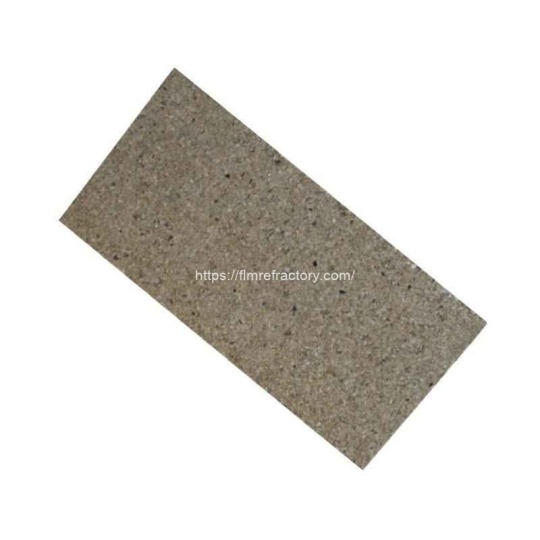
Vermiculite is a hydrated layered silicate mineral that is unique in that it expands when heated. When vermiculite is heated, the water evaporates and expands to form a thin, lightweight sheet-like structure. This structure gives vermiculite bricks their lightweight and porous nature.
The process of manufacturing vermiculite bricks usually involves the following steps: first, the vermiculite ore is extracted from a mine and then processed to remove impurities. Next, the vermiculite ore is mixed with a binder and compressed into brick form. This manufacturing process ensures that vermiculite bricks are lightweight and strong.

Vermiculite bricks possess a number of commendable features. Firstly, vermiculite bricks have excellent thermal insulation properties. Due to the flaky structure and porous nature of vermiculite, it effectively reduces heat conduction and loss, providing excellent thermal insulation. Secondly, vermiculite tiles are heat-resistant and can withstand the stresses and changes that occur in high-temperature environments. This makes vermiculite bricks ideal for applications requiring refractory materials such as fireplaces, stoves and kilns.
Vermiculite bricks have a wide range of applications in construction and industry. In construction, vermiculite bricks are often used in the construction of fireplaces and stoves. They provide excellent insulation in hot environments, ensuring that heat does not dissipate into the surrounding space, keeping the room warm and cozy. In addition, vermiculite bricks can be used in the construction of kilns and heat treating equipment for high temperature processing requirements.
In the industrial sector, vermiculite bricks play an important role in high temperature equipment and processes. For example, they are often used in iron and steel furnaces in the metallurgical industry and in high temperature reactors in the chemical industry. The excellent thermal insulation and refractory properties of vermiculite bricks can effectively protect equipment and improve process efficiency.
However, it is important to note that vermiculite bricks need to follow proper safety measures during use. Although vermiculite itself is not toxic, the dust generated during the handling of vermiculite bricks may pose a health hazard. Therefore, while installing, cutting, maintaining or cleaning vermiculite bricks, proper respiratory apparatus and personal protective equipment should be worn to ensure the health and safety of personnel.
The precautions to be taken when cutting vermiculite bricks can be clicked and read if you need to.
In summary, vermiculite bricks are insulating bricks made of vermiculite with excellent thermal insulation and high temperature resistance properties. They are widely used in construction and industry for fireplaces, stoves, kilns, and other applications where thermal insulation and refractory materials are required. The outstanding properties of vermiculite bricks make them the material of choice for many applications, creating comfortable and productive working and living environments.
0 notes
Text
1 note
·
View note
Text
Zhenjin refractory products - magnesia chrome brick
Introduction of magnesia chrome brick: Magnesia-chrome bricks are refractory products with MgO and Cr2O3 as the main components, and periclase and spinel as the main mineral components. The main raw materials for manufacturing magnesia-chrome bricks are sintered magnesia and chromite. The purity of magnesia raw materials should be as high as possible. The chemical composition requirements of chromite are: Cr2O3: 30-45%, CaO: ≤1.0-1.5%. Zhengzhou Zhenjin Refractories Co., Ltd. is a manufacturing enterprise integrating R&D, production, sales and technical services. We are committed to the supply, construction and installation of refractory products in the cement, glass, building materials, non-ferrous smelting and metallurgical industries. .

Magnesia chrome brick features:
Magnesia-chrome bricks have high refractoriness and high temperature resistance
Strong resistance to alkaline slag erosion and excellent thermal shock stability
The production process of real gold magnesia chrome brick is simple and the service life is long

Magnesia chrome brick use: Magnesia-chrome bricks are mainly used in the cement industry and metallurgical industry, such as building open hearth furnace roofs, electric furnace roofs, refining furnaces outside furnaces and various non-ferrous metal smelting furnaces. The high-temperature part of the high-power electric furnace wall is widely used in fused cast magnesia-chrome bricks, the high-erosion area of the refining furnace outside the furnace is widely used in the high-erosion area made of synthetic materials, and the non-ferrous metal flash smelting furnace is widely used in high-erosion areas. Magnesia-chrome bricks made of materials. In addition, magnesia-chrome bricks are also widely used in the firing zone of cement rotary kiln and the regenerator of glass kiln.

0 notes
Text
What are refractories?
Refractories are inorganic and non-metallic materials that can withstand extreme temperatures and harsh conditions without undergoing significant physical or chemical changes. They are designed to provide stability and insulation in high-temperature environments.
Refractory materials have very high chemical and physical stability at elevated temperatures. They are chemically inert, and can resist thermal shocks.
The temperature that the refractories can withstand ranges from 600°C to 2200°C and above depending on their composition, type, and specific application.
Note that:
Refractories are ceramic materials.
#materials science#science#engineering#materials#materials science and engineering#refractories#bricks#cement#glass
29 notes
·
View notes
Text

Refracarb (substitute of carbores) a engineered coal tar pitch for refractory manufacturer
#Refracarb#Istar materials#refracarb a engineered coal tar pitch#substitute of carboras#coal tar pitch#carbon black#refractory#istar#iStar_materials#refracarb-coal tar pitch#istarrefracarb#refcarb
2 notes
·
View notes
Text

Ceramic Raw Material for tiles and sanitarywares, Ceramic India
JLD Minerals
Ceramic Raw Material, Ceramic Machinery Spare & Parts, Raw Material & Chemicals, Ceramic Roller & Grinding Media, China Clay, Digital Ink, Ceramic Color, Frit & Zinc Oxide, Refractories, Feldspar (Soda & Potash), Quartz, ceramic india
#ceramic#raw#materials#keramica#keramika#machinery#spareparts#chemical#roller#grinding#chinaclay#digitalink#color#frit#zincoxide#refractory#feldspar#sodapotash#tiles#sanitarywares#india#morbi#gujarat
0 notes
Text
Refractory Industry in India: The Transforming Landscape
From importing refractory materials to building a self-sufficient sector, the Indian refractory industry has come a long way.
0 notes
Text
Discover the Top Kiln Refractory Material Suppliers in USA | Moat City
Moat City is your premier choice for kiln refractory material suppliers in the USA. With a reputation for quality and reliability, we provide top-notch refractory solutions for kilns. Our diverse range of products ensures durability and efficiency, meeting the demands of various industrial applications. Trust Moat City for unmatched performance.
0 notes
Text

Team designs nitride-reinforced NbMoTaWHfN refractory high-entropy alloy
A new generation of refractory alloys with excellent high-temperature performance is urgently demanded for aero-engines, gas turbines, and nuclear power plants. As the service temperature of their hot-ends is reaching 1800 °C or even higher, traditional superalloys can hardly fulfill the temperature demands. Mainly composed of refractory metal elements, refractory high-entropy alloys (RHEAs) exhibit enhanced strength at temperatures above 1,200° C, causing them to attract a great deal of attention. Some instructive work has been done to develop new alloys with improved ductility and enhanced high-temperature strength for engineering applications by adding other elements based on NbMoTaW and TiZrHfNb RHEAs, such as Ti, Zr, Hf, Re, Si, C, and N. The main strengthening mechanism is solid-solution strengthening, second-phase strengthening, and high softening temperature. If a large number of solute atoms gather around dislocations, they will hinder the movement of dislocations. When a moving dislocation encounters the second phase, a dislocation ring will form, increasing the required external force, which provides the deformation force. Besides, high-temperature strength is generally related to softening temperature. The softening temperature for an alloy is approximately 0.6Tm (where the melting temperature, Tm, is given in K). Unfortunately, little has been reported about alloys showing promising engineering application strengths at 1,800° C or above thus far.
Read more.
#Materials Science#Science#Refractory materials#Alloys#High entropy materials#High entropy alloys#Nitrides
5 notes
·
View notes
Text
Why are Refractory Bricks So Effective in Industries?
These materials are also used to make sure no problems are faced concerning environmental issues. Refractive bricks are one such type of material being used for effectiveness in industries for various reasons.
Read more: https://refmonindustries.livepositively.com/why-are-refractory-bricks-so-effective-in-industries/
#refractory bricks#acid proof brick lining#refractory materials#refractory fire bricks#glasswool insulation#refractorybricks#refractorymaterials#rockwool insulation#hot insulation material
0 notes
Text
Types and characteristics of refractory bricks
What is a refractory brick
Refractory bricks, also known as “furnace bricks”, are bricks that can withstand high temperatures without melting or decomposing. These tiles are made of refractory clay, quartz, cellulose, asbestos, and other materials, and the refractory materials used vary from one type of refractory tile to another. Because of the different raw materials, the specific properties and applications of different refractory bricks vary, but they are usually characterized by their ability to maintain their shape, strength and stability at very high temperatures. Refractory bricks are mainly used to construct and repair smelting kilns, ovens, boilers and other equipment in high temperature environments.

Types of Refractory Bricks
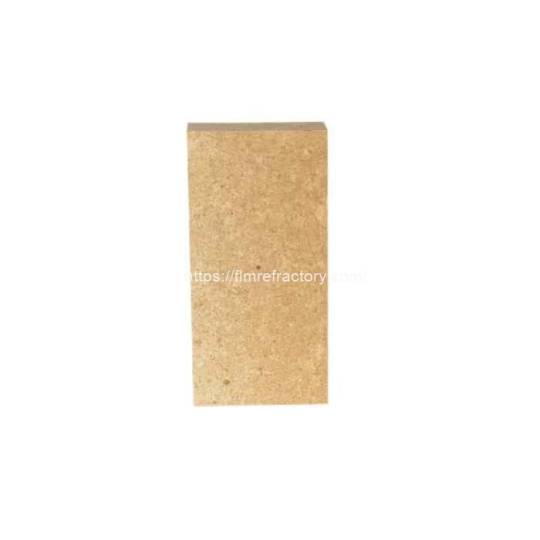
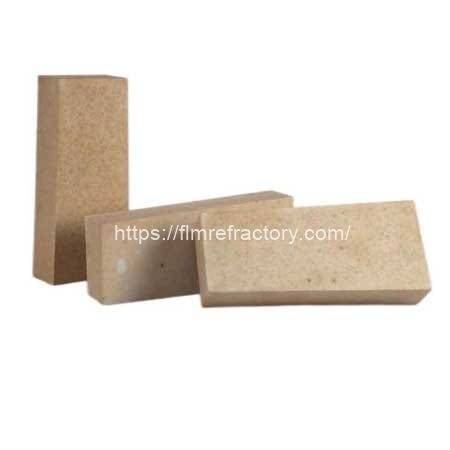
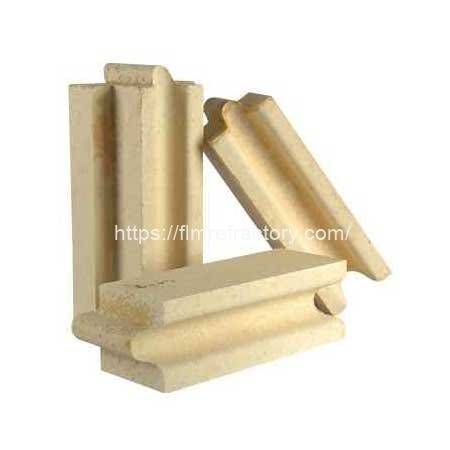
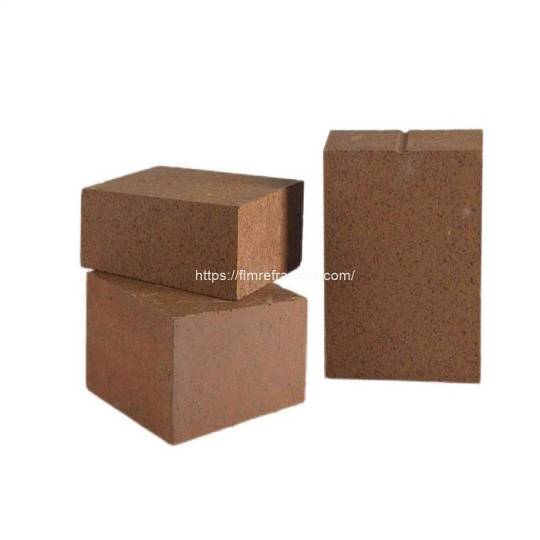
Silicon Carbide Refractory Brick Aluminosilicate refractory bricks are made of silicon carbide as the main raw material, adding appropriate amount of refractory agent, after molding, drying, firing and other processes made of refractory bricks. Silicon carbide refractory bricks have high slag resistance and good acid resistance, suitable for masonry of various high-temperature furnaces, ceramic kilns and so on.
Characteristics of refractory bricks
Good performance of high temperature resistance Refractory bricks have high refractoriness and can maintain good stability and integrity under high temperature environment.
Good thermal stability At high temperatures, the volume change of refractory bricks is small, and it is not easy for thermal expansion or contraction to occur, thus ensuring the stability of the structure.
Good chemical stability Refractory bricks have strong corrosion resistance to acids, alkalis, salts and other chemicals, and are able to maintain stable performance in harsh chemical environments.
Good mechanical strength Refractory bricks have high hardness and compressive strength, able to withstand large loads and impacts.
Good thermal conductivity Refractory bricks have a low thermal conductivity, which can effectively reduce the speed of heat propagation and minimize heat loss.
Environmental protection and energy saving Refractory bricks do not produce harmful substances in the process of use, no pollution to the environment; at the same time, its excellent thermal insulation performance can reduce energy consumption.
Refractory bricks are a kind of construction material with superior performance and wide application. Different types of refractory bricks have different characteristics and scope of application, you can choose the right type of refractory bricks according to the actual project needs.
0 notes
Note
Okay but imagine sex pollen with Miguel fucking you on your back and then even when he cums he just keeps going and it’s spilling out and refractory period who and you’re overstimulated and he’s like no no you’re not allowed to tap out and he — and he —!!!!!
Sorry
MONA. You put me in a fucking MOOD LMFAO This is way longer than I intended. And its pure filth 🫣
Word Count: 2k+
NSFW below the cut.
Part 2
...
Earth 703- A post-apocalyptic world in which New York was nothing more than a ferocious jungle.
You stared off into the distance, the familiar city skyline overrun by wild flora and thick green vines sneaking in through broken windows and cracked concrete.
“What the fuck.” You whispered to yourself, eyes now trained on the massive dragonfly that whizzed by you. Miguel grunted, punching a large finger over the screen of his watch.
The mission was supposed to be simple: Catch the anomaly—send them back to their own universe—go home. That’s it. No detours, no distractions. In and out.
“Are we close?” You questioned, pressing up against Miguel’s side at the sight of another massive insect, “I wanna get the hell outta here.”
“We just missed him.” He sucked his teeth. His mask disappeared in a flash of digital pixels to reveal his scowling face, narrowed red eyes and brows furrowed in frustration.
You’ve been wandering around the city for forty-five minutes, trekking through the godforsaken jungle with no luck. The anomaly, a Prowler from some random universe (you couldn’t remember, you weren’t paying attention at the meeting), was clever, quickwitted, and inconspicuous. You’d wished Miguel had chosen Jess for this one, but he’d refused. He’d used the excuse of her pregnancy but really, she’d already complained to you beforehand that the humidity would do her hair no favors.
“What now?” You questioned, plopping down at the base of a bulky tree trunk a few feet away. The trees were so massive that the branches seemed to kiss the sky, monstrous green leaves blocking out most of the morning sunlight.
“Keep lookin’,” he huffed, running his fingers through his hair, “we’re getting close.”
“Miguel,” you whined, your head thumping back against the trunk, “you said that forty-five minutes ago.”
“Get up,” he demanded, shooting out a web of electric red to swiftly pull you toward him. You yelped, crossing the distance within seconds, crashing into Miguel's sturdy body.
“I hate when you do that.” Your words were muffled by his broad chest, peeling your sweaty cheek away from the synthetic material of his suit. The tiniest smile ghosted over his lips.
“I know.”
…
You’d left Miguel on his own for a few minutes.
You’d gotten distracted, swinging up into one of the treetops to observe one of the colorful parrots squawking in the distance. It’d looked just like the ones back home, except this one was enormous, probably bigger than a medium-sized dog.
“Fuck!” You’d heard Miguel yell from down below, spitting out curses in Spanish, choking on the words as coughs racked his body. He’d been waving his hands in front of his face to clear his vision to no avail. You watched as his body reacted immediately to whatever it was that ailed him, his body hunching over as if in pain.
“Miguel!” You dropped to your feet in front of him and attempted to reach for him, but he recoiled, fearing your touch.
“Stay back!” he wheezed, crouching down and holding his head in his hands.
“What’s wrong?”
“It hurts,” he groaned, his eyes screwed shut as his body trembled, his fingers weaving through his thick hair strands to violently tug from the root.
“Stop,” you scolded, getting on your knees in front of him to pry his hands away, “tell me what’s wrong so that I can help you.” You shoved him down by the shoulders so that he was sitting with his knees out, bringing a hand to his face and yanking it up by his chin. His eyes, normally a mahogany shade glowed a disturbing red, his pupils dilated.
“Ran into a plant,” he forced the words from his throat, his skin gleaming with sweat, “s-some flower, I don’t know, some kind of pollen.” He groaned again, squeezing his eyes shut.
“Shit, ok, ok, ok, we can fix this,” you panicked, placing the back of your hand against his forehead. He was burning, skin blistering hot. “Where does it hurt.”
Miguel remained silent, breathing harshly through his nostrils as beads of sweat began to trickle down his face. He looked down between his legs and you followed his line of vision. Oh. OH.
His bulge was tenting through his suit, fighting against the restraints of the digital fabric. The area glimmered brightly before his cock burst through the pixels, flopping out and twitching with need.
Miguel was big.
His cock stood tall and proud, bobbing against his stomach, the tip leaking a thin bead of precum that ran down his length.
You stared for a moment, transfixed on the angry red tip before you found your voice. “Miguel—”
“You need to go,” he spat viciously, his fangs protruding as if to scare you away, “if you don't I’ll—” He stopped himself, lips pressed into a tight line as his chest began to heave. You could hear his heart rate accelerate with every passing second.
“Let me help you,” you whispered, your hand hovering over his cock. He looked away from you, his skin flushed from his cheekbones to the tips of his ears. “Miguel, please, let me help you.”
“I don’t want to force—”
“You’re not forcing me,” you breathed, letting the pad of your finger tap against his tip, smearing his precum over the surface. Your cunt throbbed, squeezing tight with an overwhelming desire to be filled. “I want to.” You cooed, your tone causing his eyes to flutter.
Miguel grunted, grabbing your hand and placing it over his throbbing cock.
“Then help me.” He hissed.
…
You needed a new suit. Immediately.
Miguel had torn into it, ripping the seams apart from the crotch, all the way up to your neck, revealing your chest and glistening pussy. You had no time to complain, mewling when he spread your thighs apart with his large hands, his eyes trained on the heat between your legs before diving in to eat from you.
You squealed, your hands flying to his head as he kissed and licked and spit over your cunt, his nose pressing against your clit. His tongue dipped into your hole a few times before licking one long stripe up to your bundle of nerves, swirling his tongue around it before sucking it into his mouth.
Okay—you’ve had your pussy eaten before, but goddamn never like this, never like it was a matter of life or death, as if your pussy alone was the answer to all things.
Miguel continued his ministrations, releasing a growl every few moments, licking to oblivion until you thought his jaw would lock.
He made you see stars, groaning loudly as you gushed into his mouth. He savored your tangy taste as he lapped at your wet folds, making sure to lick up every drop he could find.
His mouth and chin were soaked in your juices when he came back up, and it shot a fresh wave of arousal through your veins. His hand reached out to cup your face, his thumb smearing over the traces of his cum dotting across your cheek when you’d sucked him off earlier, catching some of it in your mouth before he'd pulled out, wanting to paint your face with it at the last moment.
He dipped his thumb into your mouth, forcing you to clean it as he slid his cock over your messy pussy, smearing the underside in your juices. His body shook with need, his eyes glazed and lidded, teeth sinking into his lower lip as he whimpered something about you being so wet.
He pulled out his thumb from your mouth with a pop and watched how you panted underneath him, your exposed skin now covered in a sheen of sweat.
“I’m sorry,” he muttered, positioning your legs over his shoulders before draping himself over you, folding you in half, “I’m sorry if I’m not gentle.”
Gentle? You were a big girl, you didn’t need him to be—
You cried out as soon as he pressed his fat head into your tiny hole, forcing your pussy to open up for him as he pushed in deeper without giving you much time to adjust.
“Fuck,” you sobbed, your hands scrambling to grip his arms as he began to thrust his hips, dragging his cock in and out of you at a bruising pace.
“I’m sorry, I’m sorry, I’m sorry,” Miguel began to babble, grunting when your cunt squeezed the life from him, the slick noises of your drenched pussy egging him on.
Maybe…gentle would have been nice knowing now how big he was, but you understood the circumstances of the situation. This was meant to be anything but gentle.
He had you coming again, your back arching and your bare chest pressing against his clothed one before he filled you with his own spend, pushing it as deep as he could into you. He pulled out harshly causing you to moan, watching his cum leak from your swollen pussy before slapping his length over your folds a few times and dipping back in.
He fucked you harder this time until your pussy throbbed and burned from the size of him, filling you up with so much of his cum, and delighting in the way it dripped out of you.
“Again.” He grunted, pushing his cock into your convulsing walls, slamming in deep as he licked and sucked on your nipples, leaving red love marks over your skin. You sobbed from the pleasure, feeling his weight push you into the ground.
“I can’t!” You cried, pushing weakly against his shoulders.
“You can and you will.” Miguel commanded. He couldn’t stop, barely giving you a minute to catch your breath after making you both cum again before sinking into your searing heat, stretching you beyond your limits.
You were lightheaded and spent, losing count of the number of orgasms he’d given you. Miguel growled, pulling out his cock from your abused hole and shooting his load over your body. He pressed it into your skin, smearing it over your breasts and tender nipples, down your abdomen, and finally, over your burning pussy.
He paused, his eyes tracing over your fucked out form before reaching down to pump himself with the leftover cum in his hand.
“I’m sorry, Hermosa,” he whispered, draping himself over you again, “I can’t stop, you feel too good. So fucking tight.” He slurped your nipple into his hot mouth, sucking the taste of him from your skin as he pushed his large cock into you.
Your eyes fluttered and you cried out, your fingers digging into the earth, focusing on nothing but Miguel's rich voice:
I’m sorry, I’m sorry, I’m sorry I’m—
…
It was nightfall by the time Miguel was satiated.
You felt weak, eyes heavy with sleep and body limp. Miguel sat against a tree and had you cradled in his arms, your body nestled comfortably between his legs. He rested his head over yours, inhaling the scent of sweat and dirt trapped in your hair.
“See that flower?” He muttered, pointing straight ahead at a few giant white daisies clustering around a tree. They were massive, like everything else in that universe, the stems taller than Miguel when he was standing at his full height. You nodded sleepily, ignoring the ache in your still exposed cunt. “Don’t go near it.”
“Got it.” You absentmindedly played with the frayed pieces of your suit, letting Miguel shield your exposed skin from the elements.
You probably should’ve left already, should’ve gone back to HQ for a much-needed shower and rest, probably schedule another meeting, but Miguel wouldn’t budge, his grip on you tightening whenever you so much as shifted against him.
“Quèdate quieta.” He grunted.
“Miguel,” you protested, “we have to go home. The anomaly—”
“I know, hermosa,” he murmured softly, “I know.” You never seen him this soft before, nor speak in such a gentle way, not with anyone and least of all, not with you.
You both sat there in silence, processing what happened while listening to the sounds of the jungle, the birds chirping in the distance, the leaves rustling in the gentle wind. You sighed, playing with his interlocked fingers over your stomach. It was strangely intimate (despite everything else that happened), having him coddle you.
“Miguel?”
“Mm?”
“You better get me a suit like yours.”
“What’s wrong with the fabric ones from HQ?”
“It’s a waste if you’re just gonna rip it off again.” You heard him snort out a breath, just the tiniest thing that implied he understood your meaning. You were hoping this wouldn’t be the first nor last time you’d be under him. “We got a deal?”
Miguel chuckled, his hand leaving the safety of your abdomen to venture down into your sopping-wet folds. You bit your lip, spreading your tired thighs, whimpering as his thick fingers swirled inside.
“Deal, Hermosa.”
...
Quèdate quieta- Keep still
15K notes
·
View notes
Text
The use of magnesia bricks
Magnesia brick is a common refractory material, mainly made of light, high-purity magnesia raw materials. It has excellent high temperature resistance, thermal shock resistance, corrosion resistance and heat insulation performance, and is often used in high temperature equipment such as various industrial kilns and furnaces. Below are some of the main uses of magnesia bricks.
1. Uses in the iron and steel smelting industry: In the iron and steel smelting process, magnesia bricks are widely used in the lining and flue of converters, electric furnaces, heavy oil heating furnaces and other equipment to ensure the safe operation of the equipment.
2. Uses in the light metal smelting industry: Magnesia bricks are also widely used in the light metal smelting process, such as the lining and protection of aluminum electrolytic cells, aluminum alloy melting furnaces, magnesium alloy furnaces and other equipment.
3. Uses in the glass industry: Magnesia bricks are also used as linings and flues in kilns, crucibles and pipes in the glass industry to ensure the quality and efficiency of glass production.

4. Uses in the chemical industry: In the chemical industry, magnesia bricks can be used in equipment in high-temperature and high-corrosion environments such as sulfuric acid generation conversion furnaces and flue gas desulfurization equipment to improve their corrosion resistance and service life.
5. Other fields: Magnesia bricks are also widely used in mechanical processing equipment, oil drilling platforms and other industries that need to withstand high temperature and wear, so as to prolong the service life of the equipment.
It should be noted that the magnesia bricks produced by different manufacturers have different performance characteristics and scope of application, and should be selected according to the actual use situation, and the matching of its quality, performance and use environment should be ensured. What is the specific heat capacity of magnesia bricks:What is the specific heat capacity of magnesia bricks
0 notes